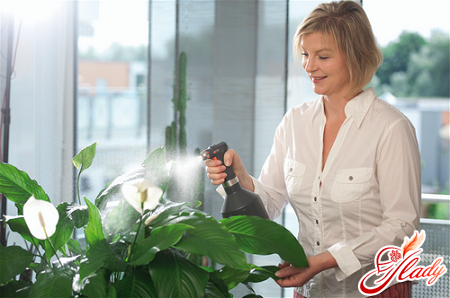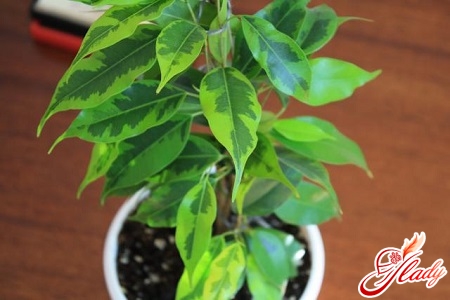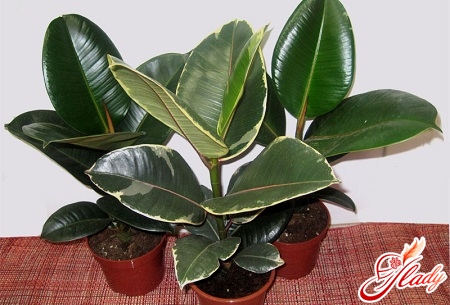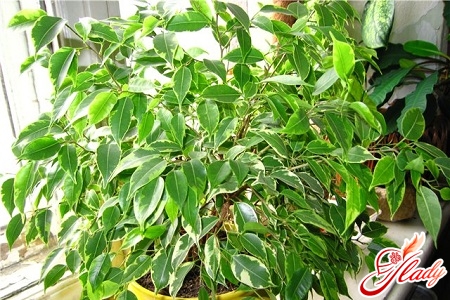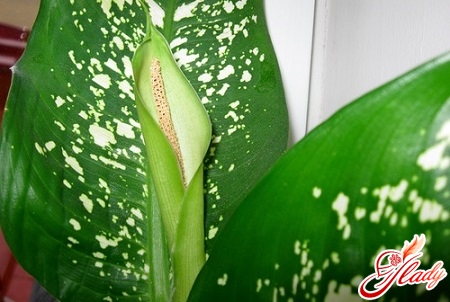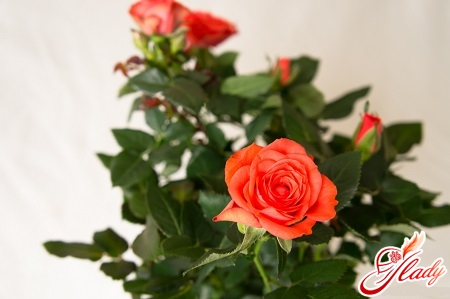 Home roses - reduced copies of their gardenкрупных родственниц – давно уже завоевали огромную популярность. Их нежные маленькие бутоны способны украсить даже самый небогатый интерьер, принося радость хозяевам дома. Как правильно ухаживать за розой, этой капризной красавицей, в домашних условиях? Что нужно сделать для того, чтобы она как можно дольше радовала вас и хорошо себя чувствовала? Своими секретами делятся с читателями специалисты — сверяйте свой уход за цветком с их советами. В домашних условиях можно выращивать только карликовые сорта роз, так как кусты садовых роз имеют слишком длинные корни – места в горшке им просто не хватит. Уход за розой предполагает выполнение ряда условий. Размещать растения надо в солнечном, светлом, хорошо проветриваемом месте. Летом ее лучше держать на балконе, а зимой – подальше от батарей центрального отопления, желательно при температуре 10-12°. Поливать домашнюю розу нужно регулярно, но умеренно. Вода не должна застаиваться. Зимой полив розы следует сократить, а в летний период два раза в месяц вносить удобрения. Увядшие цветки на ней следует сразу удалять. Выращивая розы в комнатных условиях, всегда очень хочется, чтобы они регулярно образовывали бутоны и цвели. И каждая хозяйка хочет знать, как ухаживать за домашними розами, чтобы добиться этого. Главное условие для этого – их нужно выращивать в условиях прохладного помещения. Но для образования бутонов они требуют много света. Для этого держать комнатные розы нужно в хорошо освещенных местах. Розы можно выращивать и в теплых комнатах, но тогда вам придется менять уход: необходимо будет часто опрыскивать их водой. Причем вода должна быть на пару градусов выше комнатной температуры. Если розу опрыскивать холодной водой, можно вызвать на ней заболевание мучнистой росой. Оно не смертельно для растения, но очень портит его вид, поэтому лучше всего правильно подбирать температуру воды. Летом цветы лучше размещать на балконе. Если есть возможность, пересадите их в грунт, причем сделать это можно прямо в горшках. В это время на развитие и рост роз благотворно влияет уход, включающий в себя утреннее и вечернее опрыскивание водой. Оно поможет не только смыть пыль и освежить растение, но также предупредить появление вредителей. Делать это нужно только в солнечные дни, потому что в пасмурную погоду опрыскивание приостанавливает рост растений. Комнатные розы можно держать на свежем воздухе до заморозков, после чего их снова возвращают в дом и возобновляют обычный уход. Нельзя ни в коем случае допускать, чтобы ком земли, а вместе с ним и корни, пересохли. Поливать домашнюю розу надо утром и вечером, до полного насыщения грунта. Но только ни в коем случае не на солнцепеке. Нельзя и переувлажнять земляной ком. Температура воды должна быть в пределах 20°С. Для того чтобы древесина побегов лучше вызревала, к концу лета полив постепенно уменьшают. С целью приостановки роста горшки с растениями поздней осенью вынимают из грунта. Поздние бутоны обрезают. Земля для комнатных роз, растущих в вазонах, должна быть питательной. Хороший субстрат готовится из двух частей смеси песка и глины, перемешанной с растертым в порошок птичьим пометом, и двух частей парникового перегноя. Очень хороша для розы земля, взятая из-под крапивы. Объясняется это просто – крапива всегда растет на богатых питательными веществами почвах.
Home roses - reduced copies of their gardenкрупных родственниц – давно уже завоевали огромную популярность. Их нежные маленькие бутоны способны украсить даже самый небогатый интерьер, принося радость хозяевам дома. Как правильно ухаживать за розой, этой капризной красавицей, в домашних условиях? Что нужно сделать для того, чтобы она как можно дольше радовала вас и хорошо себя чувствовала? Своими секретами делятся с читателями специалисты — сверяйте свой уход за цветком с их советами. В домашних условиях можно выращивать только карликовые сорта роз, так как кусты садовых роз имеют слишком длинные корни – места в горшке им просто не хватит. Уход за розой предполагает выполнение ряда условий. Размещать растения надо в солнечном, светлом, хорошо проветриваемом месте. Летом ее лучше держать на балконе, а зимой – подальше от батарей центрального отопления, желательно при температуре 10-12°. Поливать домашнюю розу нужно регулярно, но умеренно. Вода не должна застаиваться. Зимой полив розы следует сократить, а в летний период два раза в месяц вносить удобрения. Увядшие цветки на ней следует сразу удалять. Выращивая розы в комнатных условиях, всегда очень хочется, чтобы они регулярно образовывали бутоны и цвели. И каждая хозяйка хочет знать, как ухаживать за домашними розами, чтобы добиться этого. Главное условие для этого – их нужно выращивать в условиях прохладного помещения. Но для образования бутонов они требуют много света. Для этого держать комнатные розы нужно в хорошо освещенных местах. Розы можно выращивать и в теплых комнатах, но тогда вам придется менять уход: необходимо будет часто опрыскивать их водой. Причем вода должна быть на пару градусов выше комнатной температуры. Если розу опрыскивать холодной водой, можно вызвать на ней заболевание мучнистой росой. Оно не смертельно для растения, но очень портит его вид, поэтому лучше всего правильно подбирать температуру воды. Летом цветы лучше размещать на балконе. Если есть возможность, пересадите их в грунт, причем сделать это можно прямо в горшках. В это время на развитие и рост роз благотворно влияет уход, включающий в себя утреннее и вечернее опрыскивание водой. Оно поможет не только смыть пыль и освежить растение, но также предупредить появление вредителей. Делать это нужно только в солнечные дни, потому что в пасмурную погоду опрыскивание приостанавливает рост растений. Комнатные розы можно держать на свежем воздухе до заморозков, после чего их снова возвращают в дом и возобновляют обычный уход. Нельзя ни в коем случае допускать, чтобы ком земли, а вместе с ним и корни, пересохли. Поливать домашнюю розу надо утром и вечером, до полного насыщения грунта. Но только ни в коем случае не на солнцепеке. Нельзя и переувлажнять земляной ком. Температура воды должна быть в пределах 20°С. Для того чтобы древесина побегов лучше вызревала, к концу лета полив постепенно уменьшают. С целью приостановки роста горшки с растениями поздней осенью вынимают из грунта. Поздние бутоны обрезают. Земля для комнатных роз, растущих в вазонах, должна быть питательной. Хороший субстрат готовится из двух частей смеси песка и глины, перемешанной с растертым в порошок птичьим пометом, и двух частей парникового перегноя. Очень хороша для розы земля, взятая из-под крапивы. Объясняется это просто – крапива всегда растет на богатых питательными веществами почвах. 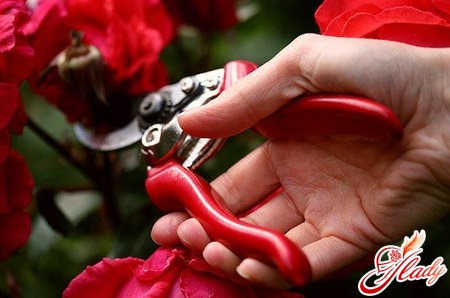
Pests and diseases of roses
House flowers are queens, just like theirGarden relatives are not, unfortunately, immune to pests and diseases. They can be infested with aphids, spider mites and rose sawflies. To rid the plant of aphids, wash it with a soap solution. This treatment should be repeated every week or one and a half weeks. Good results are also achieved by treating indoor roses with pyrethrum. To do this, 200 g of powdered pyrethrum is infused in ten liters of water for twelve hours. Then, 50 ml of the solution and 50 g of soap are dissolved in ten liters of water. An aqueous extract of garlic is very effective in the fight against spider mites, aphids and other pests. For this purpose, 50 g of crushed garlic is poured with a glass of cold water. After a quarter of an hour, the mass must be filtered and water added so that the total volume is one liter. One and a half glasses of this solution are taken per bucket of water and the plant is washed in cloudy weather or in the evening. For prevention, it is recommended to use granite dust against spider mites and powdery mildew. It is mixed with soil in spring, summer and autumn. For the same purpose, the soil and plant are sprinkled with ash.
Transplanting roses
To get a potted rose, plant it inpots from the ground should be made in August. Then the transplanted roses have time to take root before winter and by the spring of the next year they will bloom. If the transplant is done in the spring, they will take root throughout the summer and will bloom only the following year. For planting indoor roses, take small flowerpots, because in large pots the soil dries out much more slowly and can turn sour. This can cause the roots to rot. In addition, in large pots, indoor roses "grow fat": they give few flowers and many leaves. Try to grow flowers in small pots, more often transplanting them into nutrient mixtures and feeding them with fertilizers. When transplanting an indoor rose during the growth period, try not to break the earthen lump so as not to damage the root system. Roses can be transplanted this way all summer. In order for the plant to take root better, it is placed in the shade for five to seven days and moderately watered.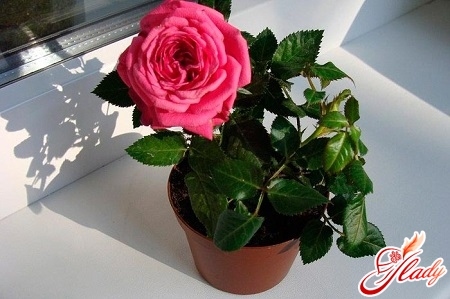
Pruning roses
Pruning of domestic roses is done to improve flowering and bush formation. This should be done as follows:
- First, cut out small, underdeveloped, weak, intertwined branches;
- Leave on the bush four or five of the strongestshoots that have medium height and normal development; if the wood on them is well ripened, they are cut off, while leaving on each shoot from three to six eyes;
- On sprouts of moderate strength, four or five eyes are left;
- On slabroslyh shoots leave two or three eyes.
Multi-colored dwarf flowers with largeIt is better to cut the buds to three to five eyes in the spring. Small-flowered dwarf roses bloom abundantly if they are cut to two or three eyes. With short breaks, they bloom until the end of the growing season. After pruning, the flowers are immediately brought into a room with a temperature of 10-12 ° C. This is necessary so that the eyes germinate slowly. After the first leaves appear, the plant should be moved to a sunny window. All new shoots should be cut to the base so that they do not take nutrients from the bush and do not stop its development. In this case, powerful shoots and large buds develop. We told you how to care for roses at home. If you follow all these tips correctly, your favorite flowers will delight you with luxurious flowering for a long time. It remains only to add that if you were given or you yourself bought a potted rose in a store, do not rush to replant it. Let the plant get used to the new microclimate for a couple of weeks. We recommend reading:




